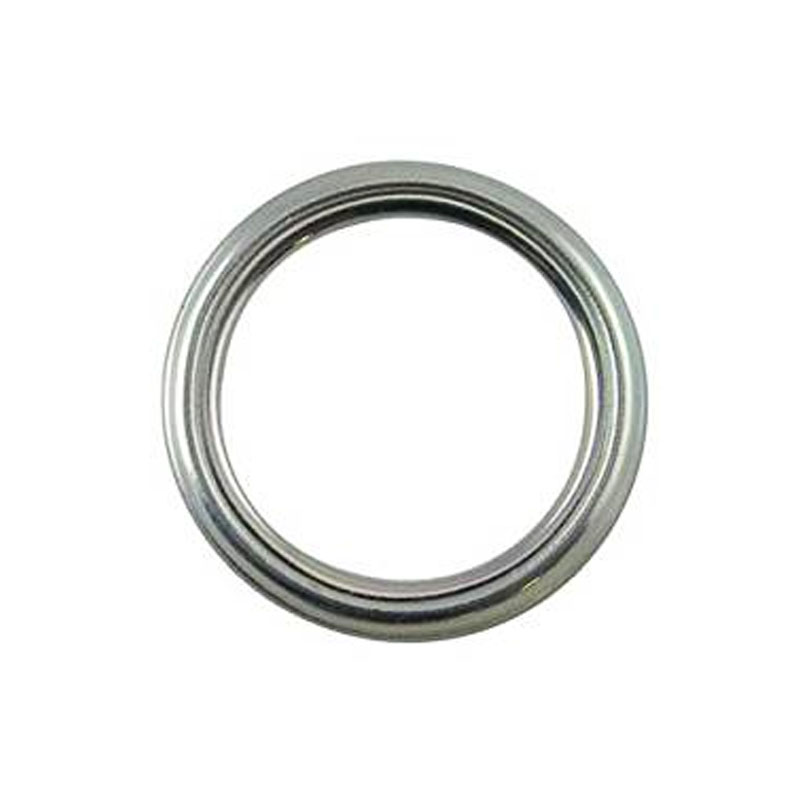transmission oil gasket
Understanding Transmission Oil Gaskets Importance and Maintenance
The transmission system is one of the most vital components of any vehicle, responsible for transferring power from the engine to the wheels. Within this complex system, transmission oil plays a crucial role in lubricating gears, reducing friction, and maintaining optimal temperatures. However, to ensure the proper functioning of transmission oil, a seemingly small yet critical component—the transmission oil gasket—comes into play.
What is a Transmission Oil Gasket?
A transmission oil gasket is a sealing component that sits between the transmission case and the oil pan or other components within the transmission system. Its primary function is to prevent transmission fluid from leaking out, ensuring that the fluid stays contained within the system. Made typically from rubber, cork, or composite materials, transmission gaskets are designed to withstand high temperatures and pressures arising from the operation of the transmission.
Importance of a Healthy Transmission Oil Gasket
The integrity of the transmission oil gasket is essential for several reasons
1. Fluid Containment An effective gasket prevents transmission fluid from leaking, which is crucial for the system's ability to function properly. A leak can lead to low fluid levels, which can cause overheating and, ultimately, catastrophic transmission failure.
2. Performance Proper sealing ensures that the transmission operates at its optimal level. Any loss of fluid can affect shifting performance, leading to slipping gears, rough shifting, or delayed engagement.
3. Longevity A well-maintained gasket can significantly extend the lifespan of the transmission. Preventing leaks not only maintains fluid levels but also helps avoid damage that can arise from inadequate lubrication.
4. Cost Efficiency Addressing repairs associated with a faulty gasket early can save vehicle owners substantial money in the long run. A minor leak can lead to more significant issues over time, requiring extensive repairs or a full transmission replacement.
Signs of a Failing Transmission Oil Gasket
transmission oil gasket

Recognizing the symptoms of a failing transmission oil gasket is crucial for timely intervention
- Fluid Leaks One of the most obvious signs is the presence of red or brown transmission fluid on the ground where the vehicle is parked. If you notice wet spots or puddles, it’s time to investigate.
- Low Fluid Levels If you consistently find that your transmission fluid level is low, it may indicate a leak from the gasket. Regularly checking fluid levels can help identify this issue early.
- Strange Noises Unusual noises when shifting gears, such as grinding or whining, may be a sign of low fluid levels, often linked to a leaking gasket.
- Warning Lights Modern vehicles have built-in diagnostic systems that will trigger warning lights if low transmission fluid is detected. If this occurs, it should not be ignored.
Maintenance and Replacement
To ensure the longevity of your transmission oil gasket, regular maintenance is imperative. Here are some tips
1. Routine Inspections Regularly check for signs of leakage around the transmission area and monitor fluid levels.
2. Fluid Changes Adhering to the manufacturer’s recommendations for fluid changes can help maintain the rubber or material integrity of the gasket.
3. Professional Help If you suspect a gasket issue, it’s advisable to consult a professional mechanic. They can perform a thorough inspection and replace the gasket if necessary.
In conclusion, while the transmission oil gasket might seem like a minor part of your vehicle, its role in ensuring smooth transmission performance is significant. Regular checks and maintenance will go a long way in preventing leaks and preserving the health of your transmission system. Remember, an ounce of prevention is worth a pound of cure—taking care of your transmission oil gasket today can save you from costly repairs tomorrow.
-
Understanding Cassette Seals: The Advanced Solution for Sealing Performance
News Jun.17,2025
-
The Vital Role of Front and Rear Crankshaft Seals in Engine Health
News Jun.17,2025
-
The Ultimate Guide to Heavy Duty Seals: Durability for Every Application
News Jun.17,2025
-
Mastering Engine Protection: Understanding the Role of the Crankshaft Oil Seal
News Jun.17,2025
-
Engine Leak Prevention: The Importance of the Crankshaft Front Oil Seal and Gasket Components
News Jun.17,2025
-
Choosing the Right Oil Seal: Comparing TTO Seals, CFW Oil Seal, Stefa Seals, and More
News Jun.17,2025
-
Understanding the Importance of the Crankshaft Oil Seal in Engine Performance
News Jun.16,2025
Products categories















